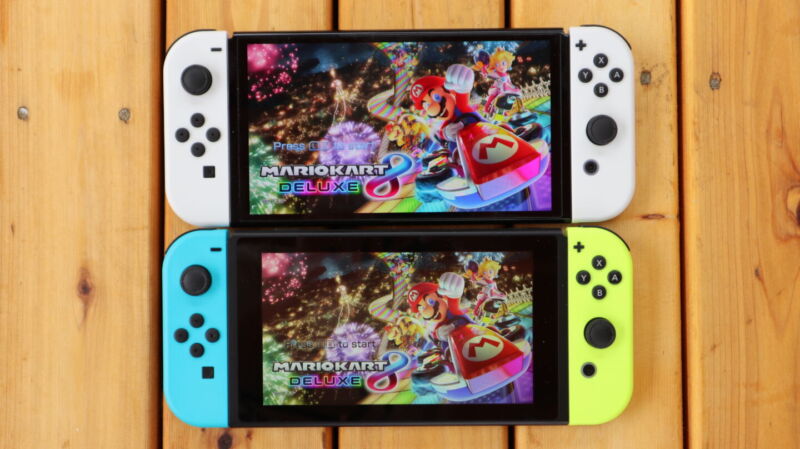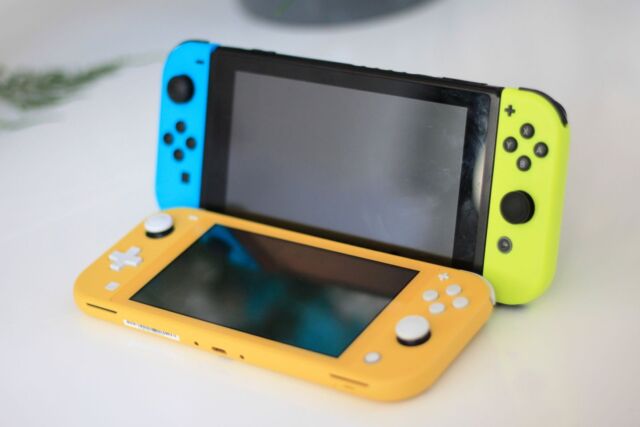Larger screen size could lead to a larger device footprint than the current Switch.

Nintendo’s follow-up to the aging Switch—which is widely rumored to be aiming for release later this year—will sport an 8-inch LCD screen. That’s according to Omdia analyst Hiroshi Hayase, who is cited in a Bloomberg News report focused on the upcoming handheld’s potential effects on the market for “amusement displays” over the next few years.
An 8-inch screen (measured diagonally) would put the Switch 2 near the extreme upper end of portable gaming screens historically. Among mass-market devices, only the recently launched PlayStation Portal (8-inch screen) and Lenovo Legion Go (8.8-inch screen) have broken past the 7-inch barrier for dedicated gaming handhelds.
That said, the 6.2-inch screen on the original Nintendo Switch also set portable gaming records when it launched in 2017, easily surpassing the once-luxurious 5-inch screen of 2011’s PlayStation Vita. The 2021 launch of the Switch OLED increased the diagonal screen measurement to 7 inches, a screen size that has since become somewhat standard on subsequent portable gaming devices like the Steam Deck and ROG Ally.
The Switch OLED achieved its screen size increase over the original model primarily by reducing the thickness of the black bezel surrounding the screen itself. An 8-inch screen on a Switch 2, on the other hand, would likely require the console’s physical footprint to increase. At a standard HD aspect ratio, an 8-inch (diagonal) screen would measure 7 inches (horizontal) by 3.9 inches (vertical), or a bit wider than a standard Switch without Joy-Con’s attached (about 6.8 inches wide).Advertisement

A potential return to an LCD screen for the base-model Switch 2 might also be disappointing for players who have gotten used to the brighter colors and deeper contrast of the Switch OLED (or the recently launched Steam Deck OLED). But OLED screens cost 20 to 25 percent more to produce than similarly sized LCD screens in the smartphone market on average, according to analyst reports. And since the Game Boy’s 1989 launch with a low-resolution black-and-white screen, Nintendo has often eschewed support for the best display technology available in favor of lowering hardware costs (and consumer prices).
In November, Digital Foundry engaged in some informed speculation on the potential hardware power of an upgraded Nvidia chip that it thinks is the “best candidate” for use in a Switch follow-up. Reports from over the summer suggest developers have been shown demos of the upcoming hardware supporting modern graphical effects like ray tracing and DLSS.
Nintendo’s Switch successor is already in third-party devs’ hands, report claimsOther reports from later in the summer suggest the new console will still include some sort of cartridge slot for physical media. Thus far, though, Nintendo has offered only vague answers to whether the next Switch will be backward-compatible with games designed for the current model.




